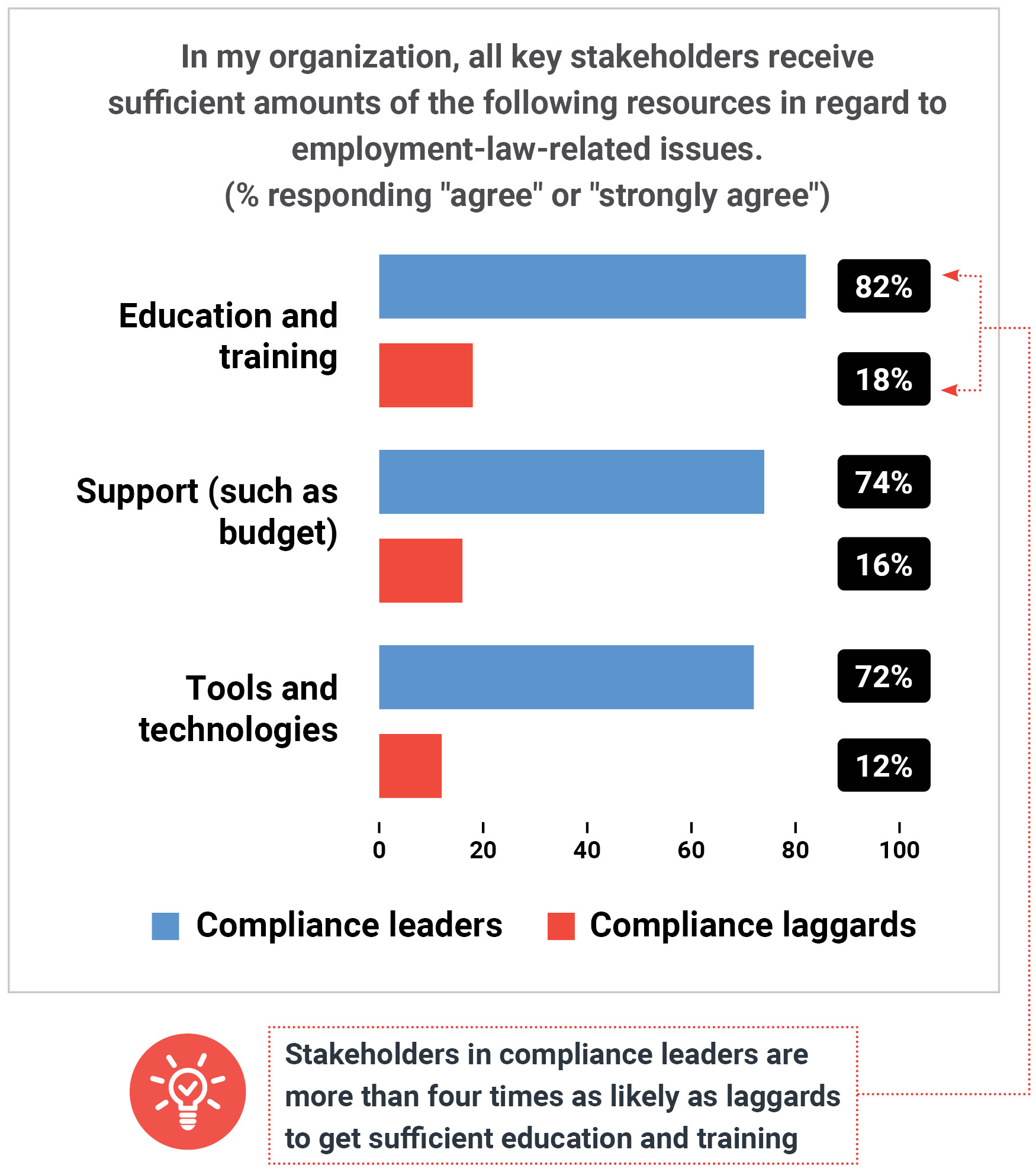HR.com’s State of Legal Compliance and Employment Law 2024
Navigate the ever-changing landscape of employment law with confidence
Posted on 05-02-2024, Read Time: 6 Min
Share:

Highlights:
- Almost one-third of respondents have a fully mature compliance function.
- Just half say compliance initiatives are well-funded, though 70% say they are well-prepared.
- Compliance leaders are more than twice as likely as compliance laggards to be well-funded.
To unveil their strategies, the study looks into the challenges, technologies, and processes involved in employment law compliance.
This report starts with a maturity model for the employment and labor law compliance function. We found that less than a third of respondent organizations have a fully mature compliance function, a group we refer to as compliance leaders. By comparing them to organizations with less mature systems — deemed compliance laggards in this report — we seek insights into potential best practices.
Here are the major findings from the study:
How Mature Are Today’s Compliance Functions?
Finding: Almost one-third of respondents have a fully mature compliance function
The chart below reveals a maturity model for the employment and labor law compliance function. Almost one-third (31%) of respondents say their organization has a fully mature compliance function.In practice, this means they have documented their processes, monitored their performance, proactively assessed risk, and generally tend to be future-looking.
At lower levels of maturity, the compliance function falls short in some aspects. For example, the second highest level lacks proactive risk assessment. Almost one-quarter of respondents are at this level.
About one in five respondents rank in the bottom two levels of maturity, and we believe any organization at these levels should be especially concerned about the consequences of compliance failures. Fines and reputation damage can be significant, which is why compliance is a priority for most organizations.

Finding: Just half say compliance initiatives are well-funded, though 70% say they are well-prepared
Just over half (51%) of the respondents agree or strongly agree that their compliance initiatives are well-funded, but less funding does not always reduce preparedness. In fact, 70% agree or strongly agree that they are well prepared to deal with labor and employment compliance concerns, and only 10% say they are not well prepared.These findings represent relatively good news, but they are somewhat at odds with our previous finding about levels of maturity. This suggests some respondents might be overconfident about how well-prepared they are.
Finding: Compliance leaders are more than twice as likely as compliance laggards to be well-funded
Over 80% of compliance leaders are well-funded, whereas only 30% of laggards are. This appears, at least in part, to translate into confidence in the compliance processes. After all, 95% of compliance leaders feel well-prepared compared to only 51% of laggards.Finding: Stakeholders in compliance leader organizations are far more likely to have sufficient resources for support, education, and tools for compliance
To effectively handle compliance, organizations need to provide resources for support (such as budget), education and training, and tools and technologies. Compliance leaders usually get these resources, and compliance laggards typically do not.
To learn more, we invite you to download and read the research report today:
Error: No such template "/CustomCode/topleader/category"!


